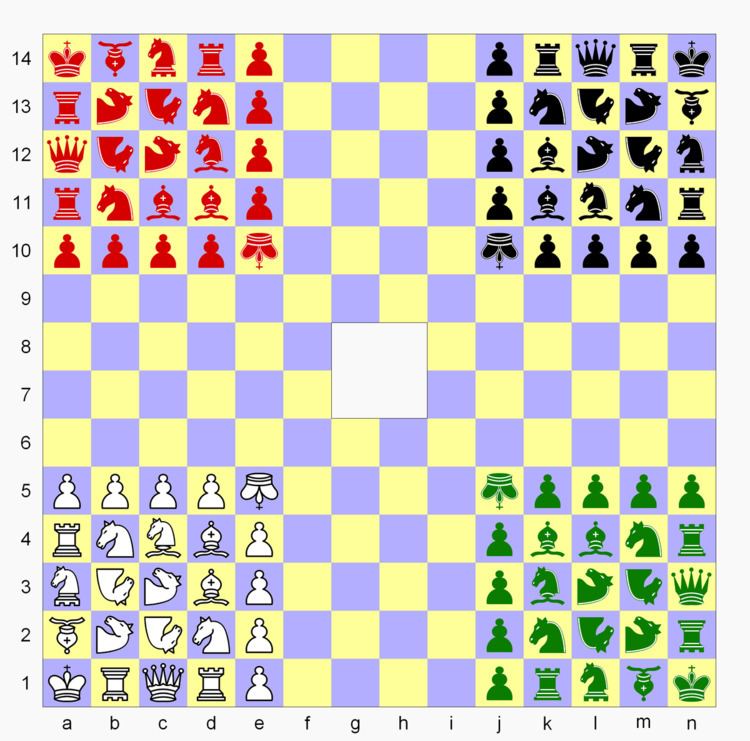 | ||
Quatrochess is a chess variant for four players invented by George R. Dekle, Sr. in 1986. The board comprises 14×14 squares minus the four central squares. Each player controls a standard set of sixteen chess pieces, and additionally nine fairy pieces. The game can be played in partnership (two opposing teams of two) or all-versus-all.
Contents
Quatrochess was included in World Game Review No. 10 edited by Michael Keller.
Game rules
The illustration shows the starting setup. White moves first and play proceeds clockwise around the board. Teammates sit in opposite corners in partnership games.
The squareless center may not be moved to or through; however, it may be jumped over by pieces that leap (knight, chancellor, archbishop, camel, and giraffe). The king, queen, rook, bishop, knight, and pawn move and capture as they do in chess. Each player's eight pawns are divided into two groups of four: one group moves forward along files, the other along ranks. As in chess, pawns have an initial two-step option, en passant is possible, and promotion occurs at the board's end. There is no castling in Quatrochess.
Fairy piece moves
The fairy pieces all capture the same as they move:
Winning
When a player is checkmated or stalemated, his king is immediately removed from the game and his remaining men become the property of the player delivering the mate or stalemate (all-versus-all game), or of his teammate (partnership game). The last surviving player (or team) is the winner.
